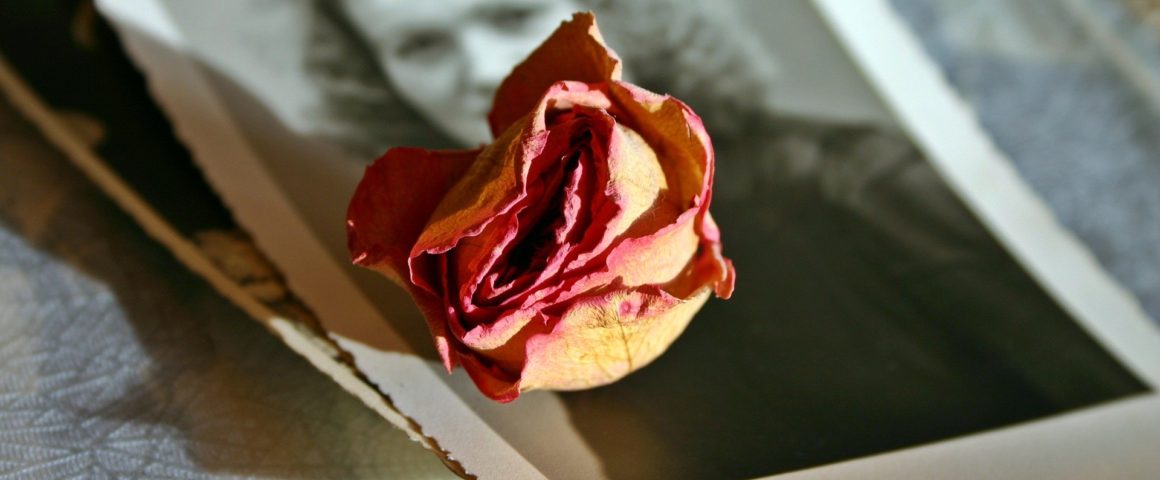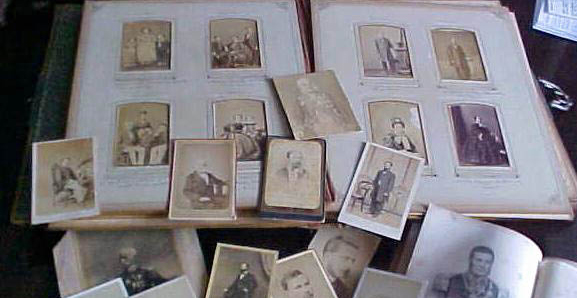I’m always on the alert for ways to add more appeal to my poetry lessons. I believe strongly in packaging. Perhaps a year at NYU majoring in advertising has something to do with it. I strive to make my teaching a touch out of the ordinary so that I can entertain and motivate in fresh ways. When I prepare for a class I decide what poetic point I want to work on and then how I can sell it to the class in a relaxed yet riveting manner. Oh, shades of a frustrated copywriter!
Several years ago I came across a fine poem by Jon Anderson called “The Photograph of Myself’ (in Death and Friends, University of Pittsburgh Press, 1970). The moment I finished it a lesson began forming in my mind. In the poem, Anderson (the man) is talking to the photo of Anderson (the boy), envying the simplicities of that time, while also reassuring the lad of the kind of man he will grow to be.
The Photograph of Myself
Surely in my eyes that light is now lost,
or has deepened; and my hand, which
in the photograph seems tense
and strong, is less sure.
Is it the right hand? Yes, it is still
lean, and larger now;
enough to hold this small, boy’s hand
within it, like a son’s,
perhaps to reassure him, as I do not
my own sons, who are not yet born.
Across the grey garden
stand some men; I do not know them.
Nor, I think, does he. But they stand firm,
a terrible simplicity
which will disappear. So, too, the other,
unknown, as far from him
as my living self, who again
clicks the shutter.
He did not know it would reach this far.
But it’s not real, the boy,
myself, looking out at me but not seeing,
and the garden, which never grows.
Good friend, believe me,
here I am, perhaps your best intention;
my hand can hold now your entirely small body.
I can love you;
you are the friend’s son, myself,
to whom I speak and listen.
The honesty of the poem pulled me in. I began thinking of pictures of me as a child, captioned, dated, and held snugly in albums: Harry not at all happy in the basinette, 1950; Harry’s first shaky steps alone at nine months; Marty holds Harry atop merry-go-round pony, 1952. Here were frozen bits of time begging to be thawed and relived again. My students had a wealth of memories tucked inside family photo albums that they could explore with their writing.
Many students had questions. Did they all have to be baby pictures? Should more than one be brought in? There were so many at home, what kinds were best? What if their parents didn’t allow them to bring in very old pictures?
They didn’t all have to be baby pictures. Photos taken five or six years ago would be fine. I wanted enough time to have elapsed to make these captured moments fresh again. I was afraid that recent snapshots would elicit in their writing a tone bordering on dull, composition-like chatter. Three or four shots should be brought in for a variety of themes to choose from. I urged them to spend a fair amount of time making the selections. A posed shot where they’re smiling for the camera might offer a very limited idea for a poem. They should be on the lookout for a picture with something going on. A humorous shot their parents set up. An unexpected photograph catching them being natural. A cherished picture with a favorite relative. If they ran into trouble getting permission from their parents, that didn’t mean they were automatically off the hook. They were to select the shots they wanted to work with, set them aside, and then look at them again right before coming to school.
When I walked into class the following week a bunch of students rushed up in a frenzy to show off their photographs. Other students in the back of the room were eagerly exchanging shots as if they were baseball cards. Out of all the classes I worked with, only a handful of children didn’t come prepared. Most of the credit goes to their teachers who reminded them every day of their “homework for Mr. Greenberg.”
I passed out copies of Jon Anderson’s poem. It’s vital to see what a Poet does with his linebreaks as well as to listen to his poem. One student, commenting on the poem, said it made him think of photography in a new way. He never gave much thought before to the idea that when you view a photograph, you are actually taking the place where the camera was positioned. Another student, holding up her picture, said she found it “weird” gazing back all those years, staring at her own eyes looking up at her out of a playpen.
“You think that’s weird, take a gander at my picture!” I held up a shot of me at eight months, sitting on my mother’s lap in front of a round bureau mirror. Everyone was in the mood to start writing, but still needed a little guidance. I wanted the push to be gentle, just enough to nudge them into motion so they could decide for themselves the direction to take in their writing. I offered these three possible approaches:
- They could recreate the events of the time and supply thoughts they might have had as babies reacting to the situation.
- They could let the photographs trigger other memories, as I had done in my poem, and use those as material for their writing.
- They could look at an interesting photograph, let it fuel their imaginations, and use that as a runway to a flight of fancy.
The final results amazed me. The photographs added a mixture of confidence and honesty to everyone’s work-the flavor of writing when the writer feels secure with his material.
Julie, a slender fifth-grader, risked classroom teasing by using a photograph revealing she was quite chubby a number of years ago:
So Heavy I Can’t Slide
I’m on this slide.
So tight I feel.
Are the walls coming in?
Is the floor slanting?
My mother screams out,
“Hey, Julie, stop eating those
cookies all night!”
Everybody laughs.
I don’t think it’s funny.
What does she mean?
I can’t live without cookies!
Why can’t I go down this thing.
Perhaps I’ll stay on forever.
“No, I can’t!” I yell.
My mother came over.
I felt like a prisoner.
I knew I’d get slapped.
I was wrong.
All she did was pick me up
and say, “Hey, fatso!”
I didn’t know what to do.
I just had a feeling
I shouldn’t go on this thing
ever again.
Maybe I’ll get bread and water
next time.
John worked with a cute picture that had him looking as if he were wearing a mudpack:
Eat, Little Baby, Eat!
I was one year old,
but I was very important!
I was the one who kept the baby food
from rotting. I didn’t like it,
but I ate it.
My duck and kangaroo
didn’t eat, you know,
the ones around my neck.
My mother always said,
“Eat, little baby, eat!”
I did. One day I had
a banana. It tasted good.
I had two.
I fed my duck and kangaroo.
My mother was mad.
I wanted to cheer her up,
so I threw the food
on the floor.
Michele (6th grade) used a shadowy shot of herself wrapped in a blanket as an infant and pulled out this mood piece:
My Baby
I am wrapped up in a shell
and thrust into the world deserted,
abandoned,
lonely,
I hear someone scream
“My baby!”
The two words fill my ears.
My brain shatters like glass.
Something hovers over me neither
man nor beast.
I want to run but my
bones feel like oatmeal.
It picks me up and
throws me into the sky.
Gravity should pull me
down, but it’s gone—
everything’s
gone.
Blackness shrouds me.
Doug (5th grade) worked with a kindergarten photo showing his class being led around the room in a train game:
A Reluctant Game of Choo Choo
Bringing the
kids to their senses
almost
forcing them
to use their imagination
The human
train
being conducted
by Mrs. Hamburg
I am
the locomotive
being guided
by the conductor
into the
deepest
depths
of
my
imagination
at
the
same
time
struggling to
pull
the
other
cars …
Ayelet gathered memories from a baby picture of her clutching a favorite doll:
What an Obedient Little Girl
Oh my,
what an obedient little girl
I was.
My mommy told me
what to do
and I did it.
In this case, I had to go
to the bathroom.
Mommy said
she’ll be there in a moment.
She was!
Here I am,
on my journey to the bathroom
with my bottle in one hand.
In the other
I had my beautiful, lovable …
Oh, no!
I forgot him!
I forgot my Wimpy doll.
I need him to keep me company,
or else I get bored.
Where is he?
Where can he be?
Oh! there he is.
Trying to hide from me?
He knows he can’t do that.
I’ll always find him.
Now, I walk to the bathroom,
me, my bottle, and my naughty Wimpy.
All of us feeling
content
in our own
special way.
Francoise wrote a poignant poem based on a photograph of herself sitting at the breakfast table with her grandfather:
My Grandpa
A lonely man
unaware of life.
Quiet,
but is there.
90 years old:
His wife died
before I came along.
I don’t know him
as well as I’d like.
Works hard,
raking leaves,
painting the house,
and shopping for him
and his sister
whom he lives with.
A lonely man
unaware of life.
February 18th, 1981
late at night
my grandfather died.
Now I’ll never,
ever
get to know him.
I cried and cried
when I heard
the news,
even though I didn’t
know him.
I think of my
father’s father
dead
and I cry.
My grandfather,
a lonely man
unaware of life.
Gina brought in a picture of herself taken just hours after her birth:
A New-Born Baby
1
“What a baby!”
Who am I?
What is this place?
Do those strange people know me?
What are they saying?
They sure look weird!
I’m scared.
I feel alone.
My backside hurts.
Where will I go from here?
2
So innocent.
So small and simple to the eye.
And yet so complex.
How she feels is a mystery
to those around her.
And a mystery to her also.
Is she aware of what’s around her?
She will never recall this moment.
If she does, she won’t understand.
But are you really supposed to?
She’s a miracle.
Harry Greenberg worked in the T&W program for many years. He was co-editor of “Some” magazine and Release Press books. His poems have been widely published.



